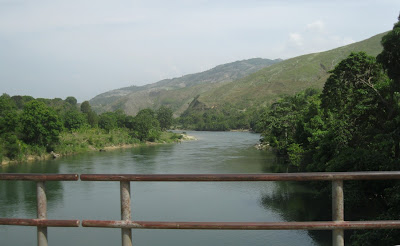 |
| President Martelly Nou Kontan Rewew ("We're happy to see you again," or maybe "see you back.") a banner I saw today welcoming him home |
Good summary here:
http://www.jamaicaobserver.com/news/Haiti-leader-returns-after-2-week-medical-leave-
and another here:
Haiti leader due to return home after medical care - Haiti - MiamiHerald.com
 |
| President Martelly speaking at the airport on his return today photo via the haitilibre.com article - link below |
Je remercie tout le monde, d'ici et de l'étranger, toutes les organisations religieuses, civiles, politiques, vous tous qui avez prié pour moi, qui avez envoyé des messages d'encouragement et qui ont permit que les prières montent pour que la grâce descende et que mon état de santé s'améliore.
He also congratulated the Senate for finally ratifying his chosen prime minister and asked the house of deputies to do the same.
Avant de finir, je vais demander au Parlement de continuer d'activer le processus de ratification du Premier Ministre, j'en profite pour féliciter la première étape au niveau du Sénat, merci pour la diligence, merci pour la décision que vous avez prise de ratifier le Premier Ministre désigné [...]
The last one resigned two months ago during a passport controversy, though if I understand correctly he has kept up with the day-to-day issues. Not having a prime minister and having a president in the hospital was a rather uneasy combination - but all ended well. Thanks be to God.
You can read more of his speech here:
http://www.haitilibre.com/article-5531-haiti-politique-le-president-martelly-est-de-retour-au-pays-discours.html









































